Distinctive Landscapes
1/28
There's no tags or description
Looks like no tags are added yet.
Name | Mastery | Learn | Test | Matching | Spaced |
|---|
No study sessions yet.
29 Terms
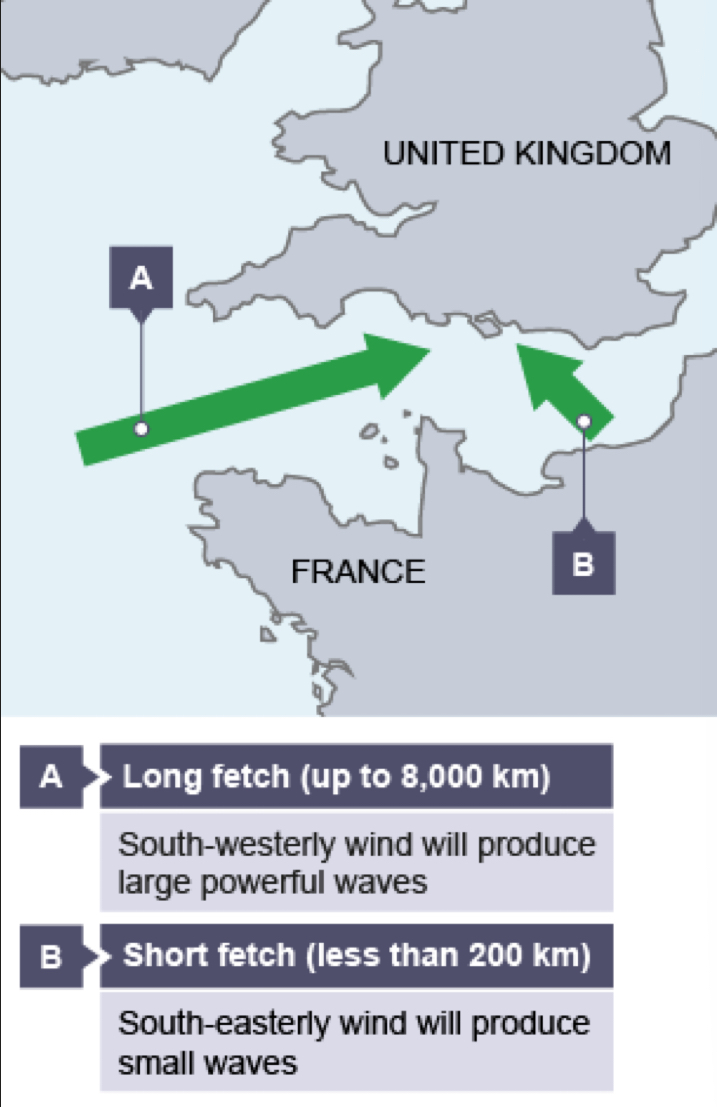
Which factors the size and energy of the wave depend on
fetch - how far the wave has travelled
the strength of the wind
the amount of time the wind has been blowing
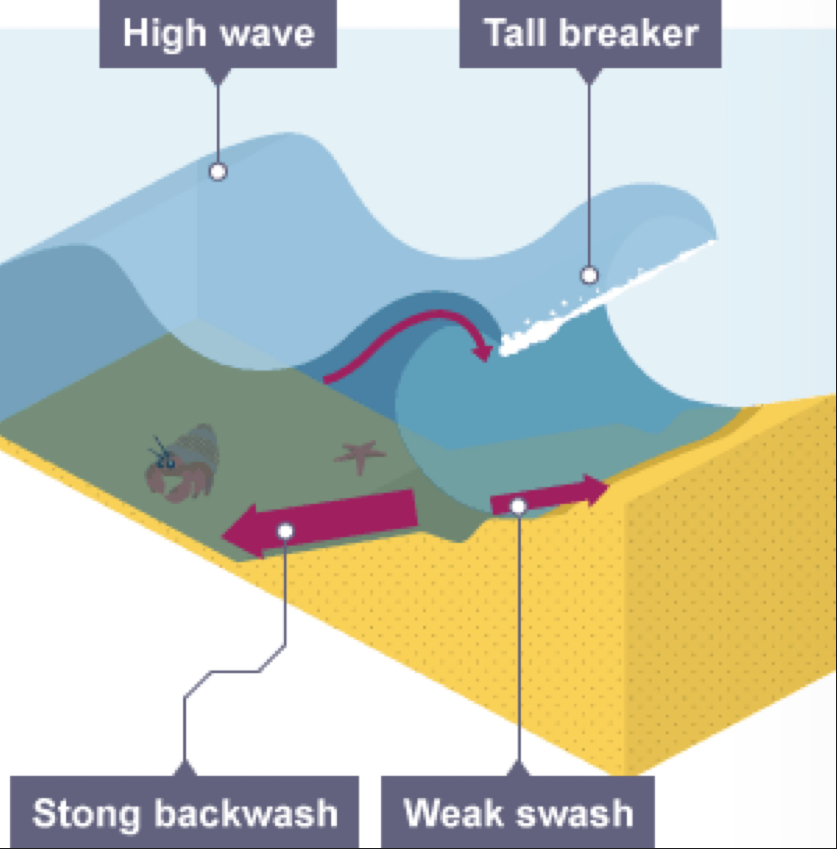
Destructive waves
weak swash and strong backwash
the strong backwash removes sediment from the beach
the waves are steep and close together
Constructive waves
strong swash and weak backwash
the strong swash brings sediments to build up the beach
the backwash is not strong enough to remove the sediment
the waves are low and further apart
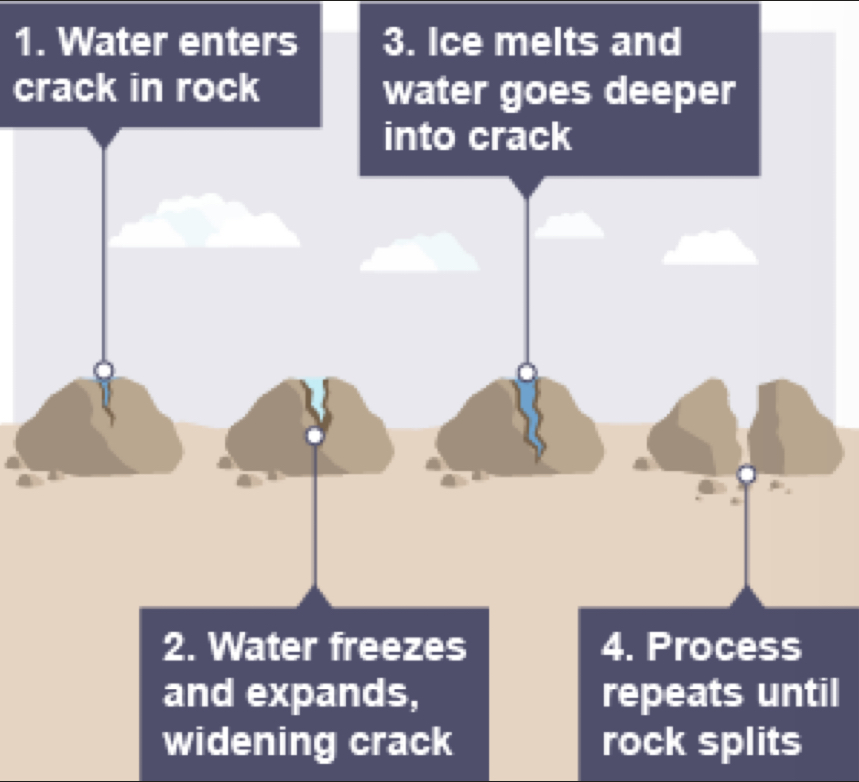
Freeze-thaw weathering
Water enters cracks in the rock.
When temperatures drop, the water freezes and expands causing the crack to widen.
The ice melts and water makes its way deeper into the cracks.
The process repeats itself until the rock splits entirely.
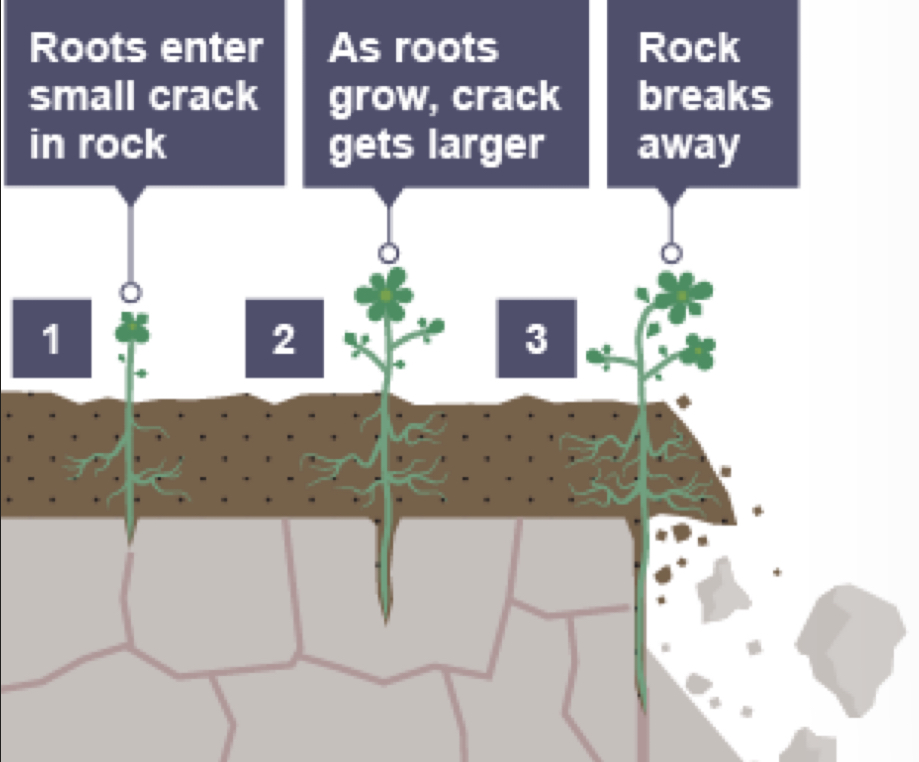
Biological weathering
Plant roots can get into small cracks in the rock.
As the roots grow, the cracks become larger.
This causes small pieces of rock to break away.
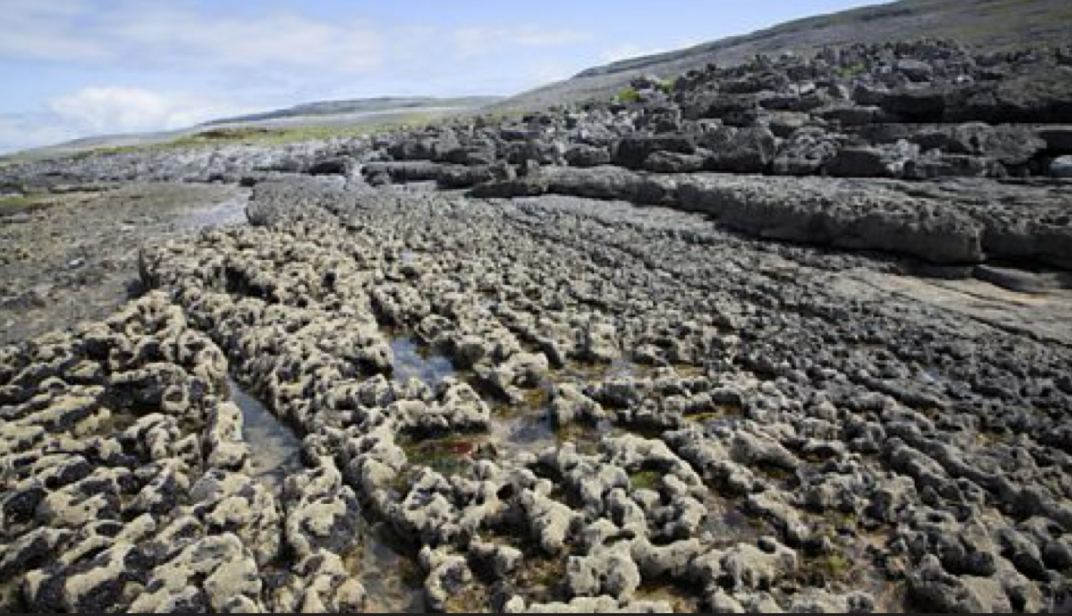
Chemical weathering
Rainwater and seawater can be a weak acid. Over time a coastline made up of rocks such as limestone or chalk can become dissolved by the acid in the water.
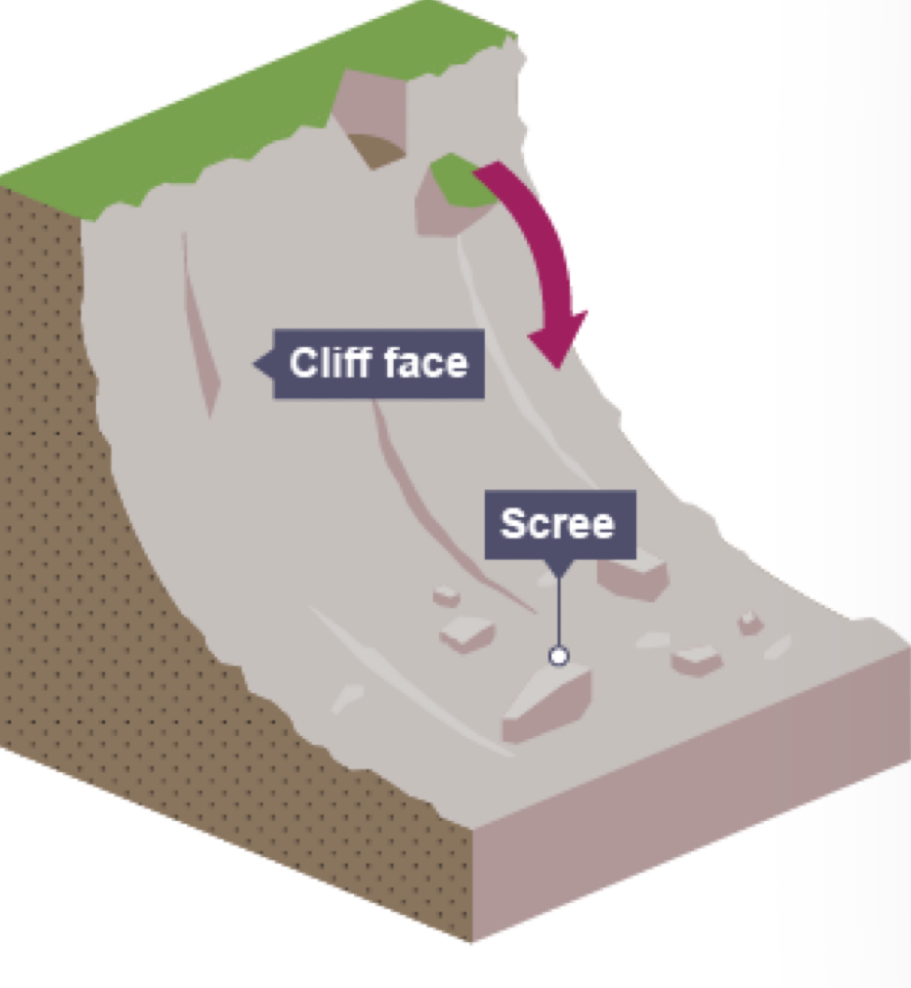
Mass movement (rockfall)
Bits of rock fall off the cliff face, usually due to freeze-thaw weathering.
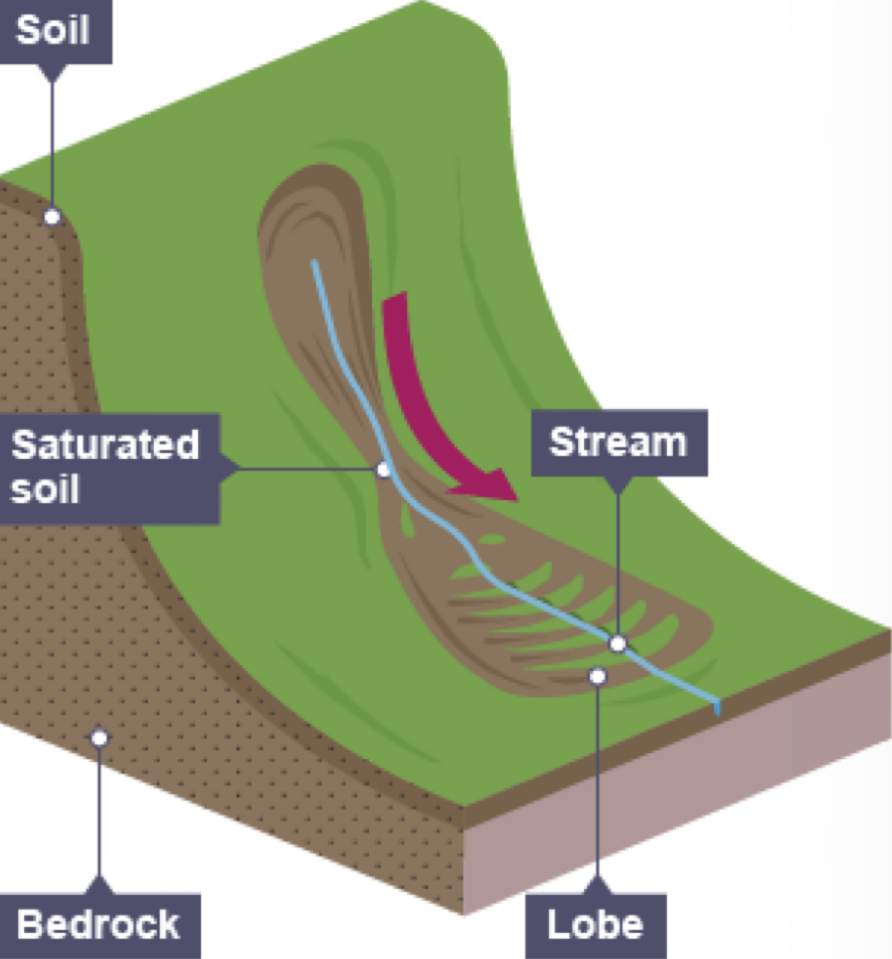
Mass movement (mudflow)
Saturated soil (soil filled with water) flows down a slope.
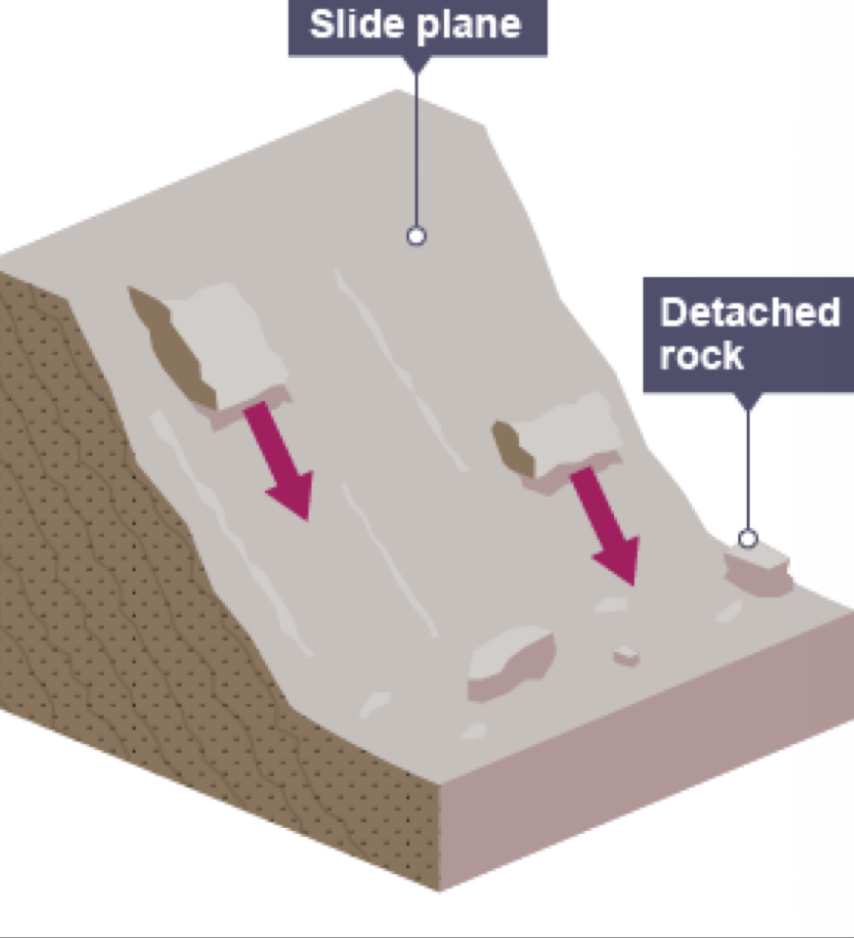
Mass movement (landslide)
Large blocks of rock slide downhill.
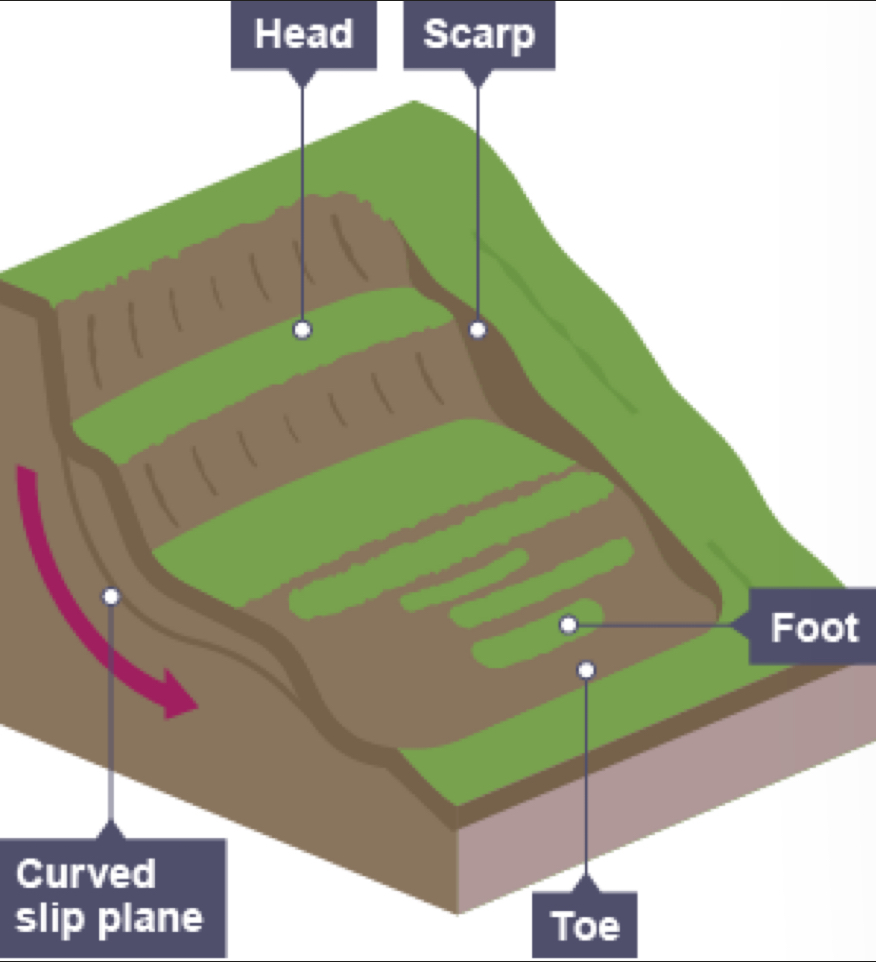
Mass movement (rotational slip)
Saturated soil slumps down a curved surface.
Hydraulic action
Air becomes trapped and compressed into cracks in the rock with explosive force causing the rock to break apart.
Abrasion
this is when pebbles grind along a rock platform or cliff base much like sandpaper. Over time the rock becomes smooth.
Attrition
this is when rocks that the sea is carrying knock against each other.
They break apart to become smaller and more rounded
Solution (erosion)
when sea water dissolves certain types of rocks
In the UK, chalk and limestone cliffs (soft rock) are prone to this type of erosion.
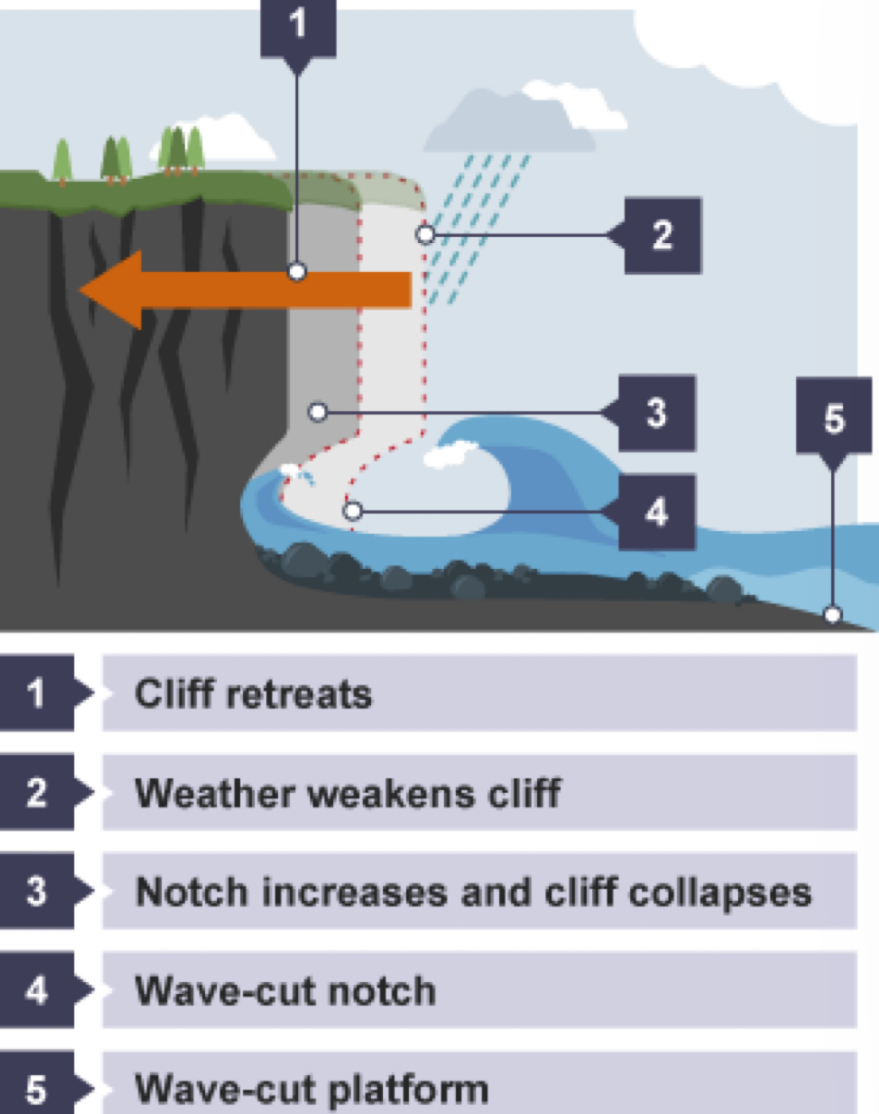
Weather as a form of coastal erosion
Rainwater can cause surface erosion and frost (in cold climates) can cause rock to shatter. Strong winds can also contribute to the erosion of cliffs.
Solution (transportation)
when minerals in rocks like chalk and limestone are dissolved in sea water and then carried in solution
The load is not visible.
Suspension
small particles such as silts and clays are suspended in the flow of the water.
Saltation
where small pieces of shingle or large sand grains are bounced along the sea bed.
Traction
where pebbles and larger material are rolled along the sea bed.
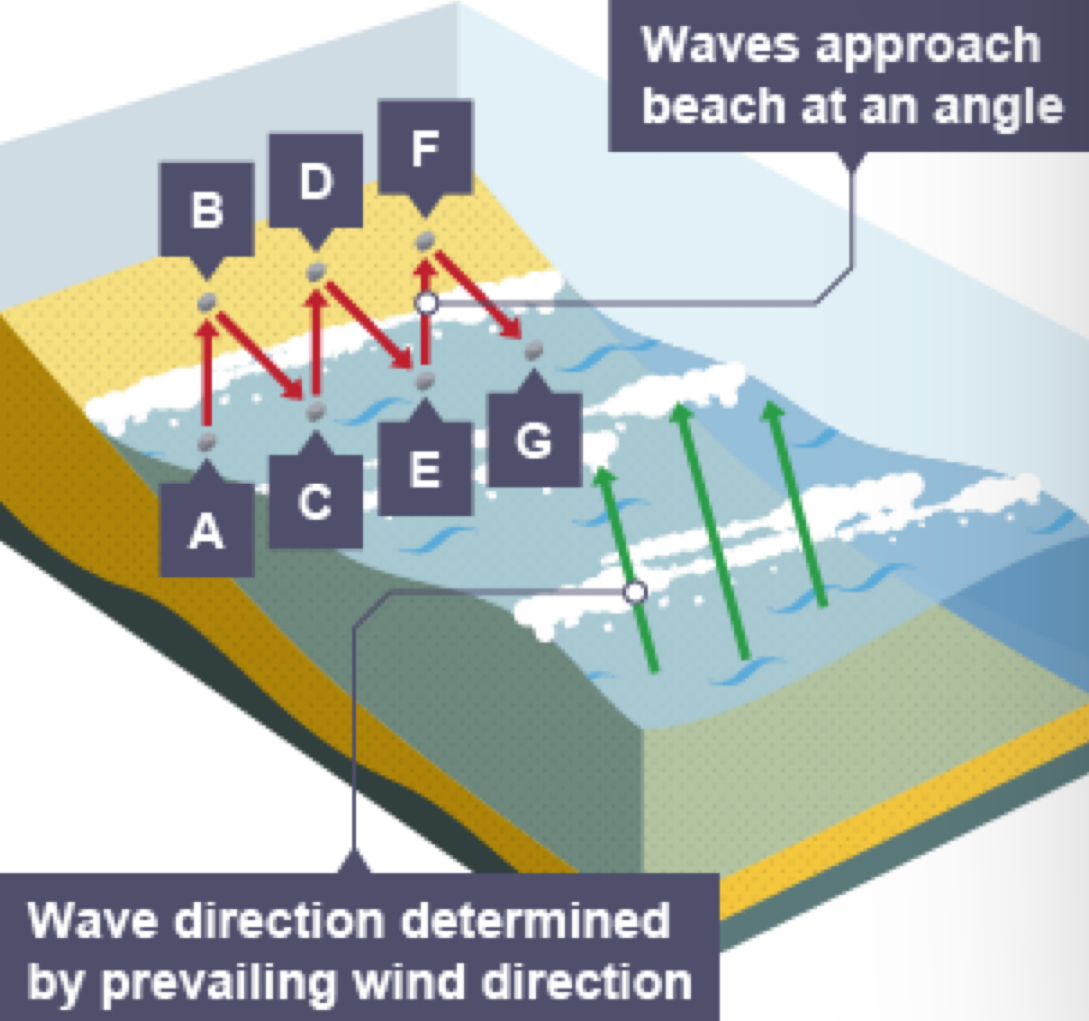
Longshore drift
Waves approach the coast at an angle because of the direction of prevailing wind.
The swash will carry the material towards the beach at an angle.
The backwash then flows back to the sea, at 90° to the slope of the beach.
The process repeats itself along the coast in this zigzag movement.
Factors leading to deposition
waves starting to slow down and lose energy
shallow water
sheltered areas, eg bays
little or no wind
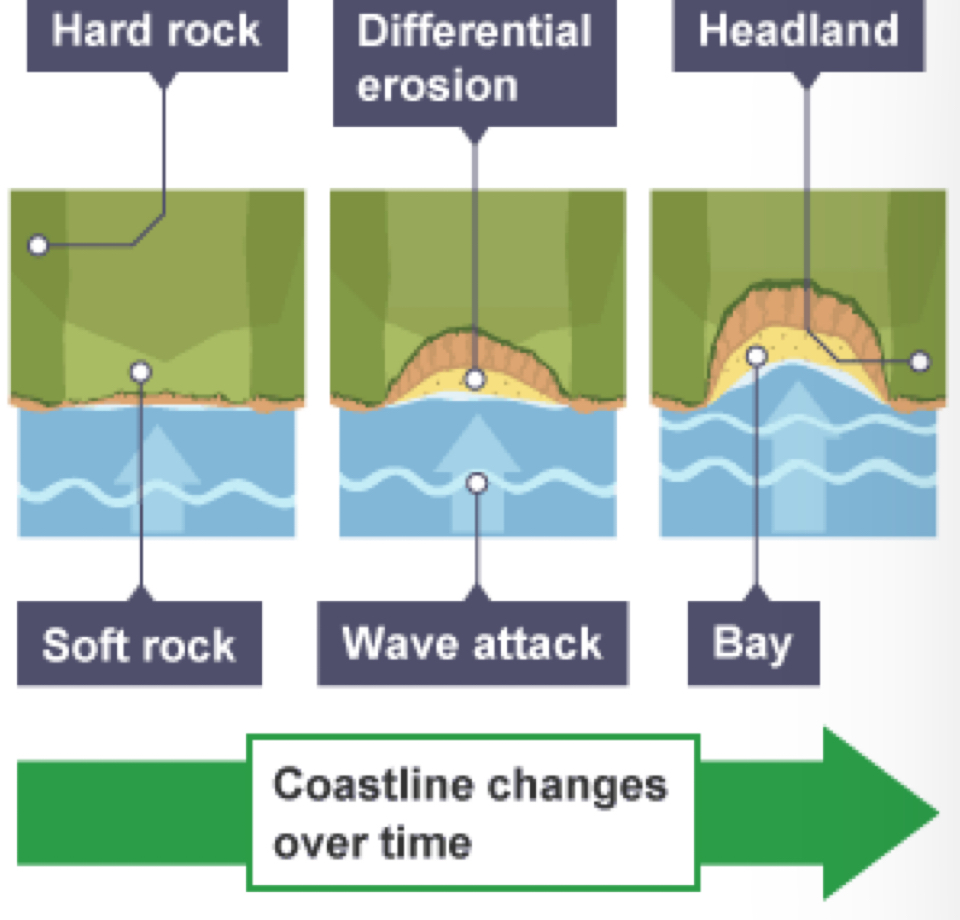
Headlands and bays
Bands of soft rock such as clay and sand are weaker so therefore they can be eroded quickly. This process forms bays.
A bay is an inlet of the sea where the land curves inwards, usually with a beach.
Hard rock such as chalk is more resistant to the processes of erosion.
When the softer rock is eroded inwards, the hard rock sticks out into the sea, forming a headland.
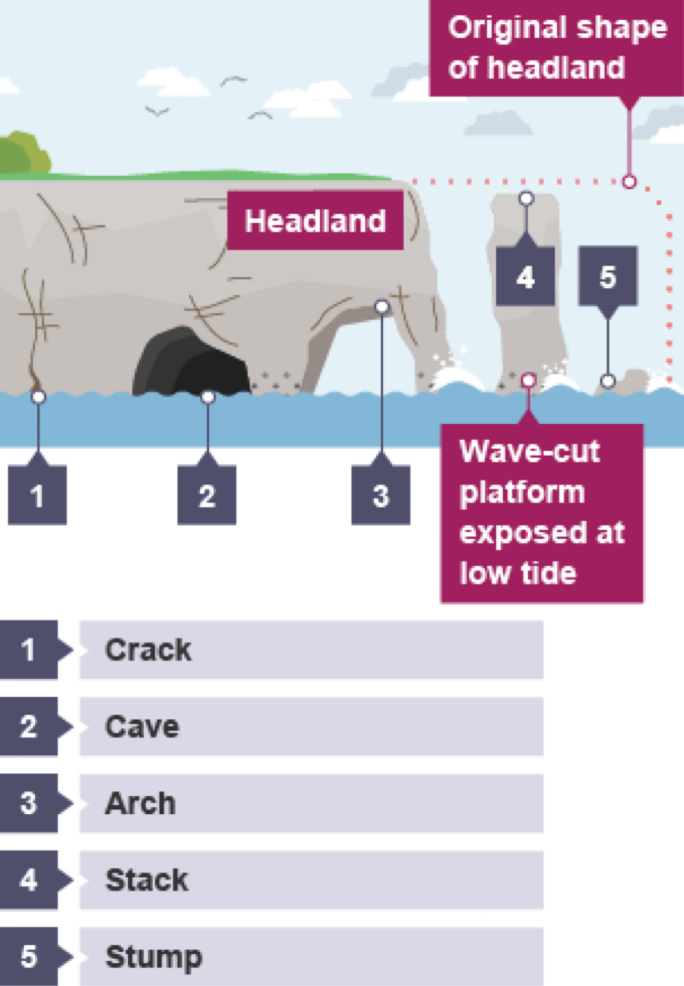
Caves, arches, stacks and stumps
Cracks are formed in the headland through the erosional processes of hydraulic action and abrasion.
As the waves continue to grind away at the crack, it begins to open up to form a cave.
The cave becomes larger and eventually breaks through the headland to form an arch.
The base of the arch continually becomes wider through further erosion, until its roof becomes too heavy and collapses into the sea. This leaves a stack (an isolated column of rock).
The stack is undercut at the base until it collapses to form a stump.
Beaches
made from eroded material transported and deposited by the sea
waves must have limited energy, so beaches often form in sheltered areas like bays
constructive waves build up beaches as they have a strong wash and a weak backwash
Sandy beaches
found in bays where the water is shallow and the waves have less energy
Pebble beaches
form where cliffs are being eroded, and where there are higher-energy waves.
Beach profile
has lots of ridges called berms.
They show the lines of the high tide and the storm tides. A sandy beach typically has a gentle sloping profile, whereas a shingle beach can be much steeper.
The size of the material is larger at the top of the beach, due to the high-energy storm waves carrying large sediment.
The smallest material is found nearest the water as the waves break here and break down the rock through attrition.
Spits
A spit is an extended stretch of sand or shingle jutting out into the sea from the land. Spits occur when there is a change in the shape of the coastline or there is a river mouth.
How are spits formed?
Sediment is carried by longshore drift.
When there is a change in the shape of the coastline, deposition occurs. A long thin ridge of material is deposited. This is the spit.
A hooked end can form if there is a change in wind direction.
Waves cannot get past a spit, therefore the water behind a spit is very sheltered. Silts are deposited here to form salt marshes or mud flats.